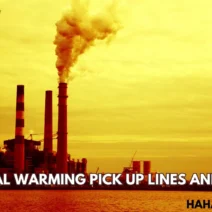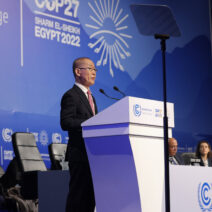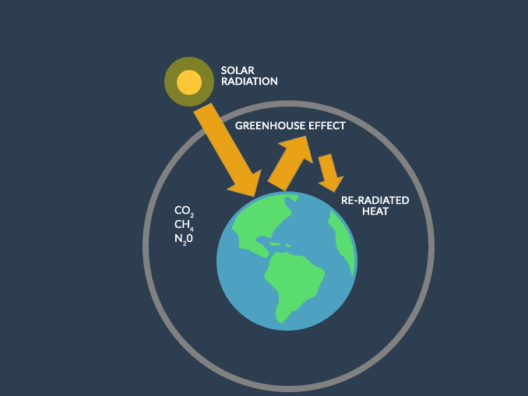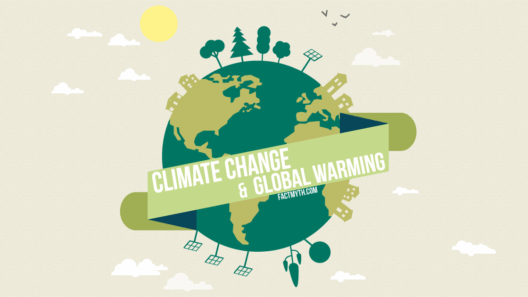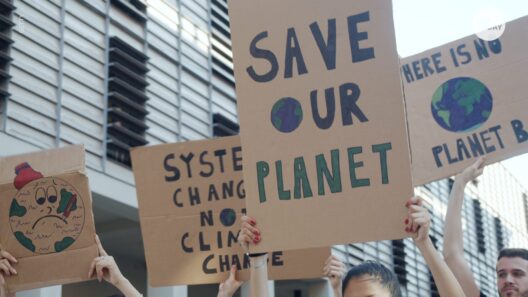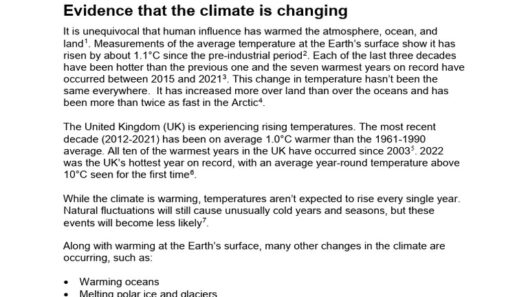Climate change stands as one of the most formidable challenges of our time, spurring debates on its inevitability and the potential for reversal. The question persists: is reversing climate change a myth or a tangible possibility? In delving into this complex topic, we uncover key characteristics of climate science, potential pathways for remediation, and the aesthetic appeal of a sustainable future.
The Science of Climate Change: Understanding the Underlying Mechanisms
Before contemplating reversal strategies, it is essential to grasp the mechanisms driving climate change. Greenhouse gases, primarily carbon dioxide and methane, trap heat in the Earth’s atmosphere. This phenomenon, known as the greenhouse effect, fuels the global warming that leads to erratic weather patterns, sea-level rise, and ecological disruption. Natural processes like volcanic eruptions and oceanic dynamics do play roles; however, human activities—such as fossil fuel combustion, deforestation, and industrial agriculture—are the predominant culprits behind the alarming acceleration of climate change.
It is imperative to approach climate change with a holistic perspective, recognizing its interconnectedness with socio-economic factors, biodiversity, and public health. For instance, the degradation of the environment disproportionately affects marginalized communities, limiting their access to clean water and sustainable agriculture. This intersectionality underlines the urgency of climate action and the compelling need for innovative strategies that not only mitigate the adverse effects but also restore natural systems.
Strategies for Reversal: Feasible Approaches to Mitigate Damage
Considering the extensive damage wrought by climate change, several strategies emerge as viable means for mitigation and potential reversal. Some of these strategies have gained traction in both scientific communities and grassroots movements, illustrating a collective commitment to addressing the crisis.
One critically acclaimed approach involves regenerative agriculture, which seeks to rehabilitate the texture and nutrients of soil through holistic practices. By minimizing tillage, maintaining crop diversity, and implementing cover cropping, regenerative techniques enhance soil health, leading to increased carbon sequestration. This method not only mitigates climate change effects but also bolsters food security—an imperative as we anticipate a surging global population.
The cultivation of trees and the restoration of ecosystems also play pivotal roles in reversing climate change. Afforestation and reforestation initiatives expand carbon sinks, while preserving existing forests curtails the release of stored carbon dioxide. Furthermore, urban greening projects enhance biodiversity, improve air quality, and contribute to the aesthetic allure of metropolitan landscapes.
However, technological interventions are equally integral to combatting climate change. Carbon capture and storage (CCS) technology offers a potent solution to sequester carbon dioxide emissions at source points, preventing them from entering the atmosphere. Moreover, renewable energy technologies—solar, wind, and hydroelectric—provide cleaner alternatives to fossil fuels, supporting a sustainable energy transition.
The Power of Individual and Collective Action: Myth-Busting the “Powerlessness” Narrative
Despite overwhelming evidence of climate damage, a prevailing societal narrative often conveys a sense of powerlessness. Many individuals feel their actions are inconsequential amid such colossal global challenges. However, this perspective undermines the profound impact that collective action can engender. Each action, whether it be reducing personal carbon footprints or advocating for policy change, accumulates to create a significant ripple effect.
Grassroots movements exemplify the latent power of collective individual action. Communities that engage in local initiatives—such as clean-up drives, tree-planting days, or advocacy for sustainable local policies—do not merely contribute to environmental betterment; they inspire others, fostering a culture of sustainability. Children educated about the importance of ecological stewardship can ignite lifelong commitments, shaping the next generation of leaders devoted to reversing climate change.
The aesthetic appeal of these initiatives further engages the broader population. A garden flourishing with native plants not only serves as a sanctuary for local wildlife, but it enhances urban landscapes, instilling a deep sense of place and connection to nature. Art installations focused on environmental themes can stimulate dialogue around climate change, making the abstract tangible while promoting community involvement.
The Path Forward: Possibility within the Pursuit of Reversal
While myths of impossibility may cloud perspectives on reversing climate change, possibilities abound. By marrying scientific understanding with innovative practices and community engagement, momentum builds toward a sustainable future. It is essential to harness this momentum—not as a fleeting trend but as a fundamental shift in how we interact with our planet.
To reverse climate change requires a synergy between scientific ingenuity, political will, and grassroots activism. By supporting progressive policies, investing in sustainable technologies, and fostering community engagement, we craft a multi-faceted solution that not only addresses environmental degradation but also enriches human experience.
In addressing climate change, we are confronted with an intricate tapestry of challenges and possibilities. As we strive to weave pathways towards a sustainable future, we find hope within the intricate and interconnected fabric of life on Earth—an enduring testament to resilience and innovation in overcoming adversity.

